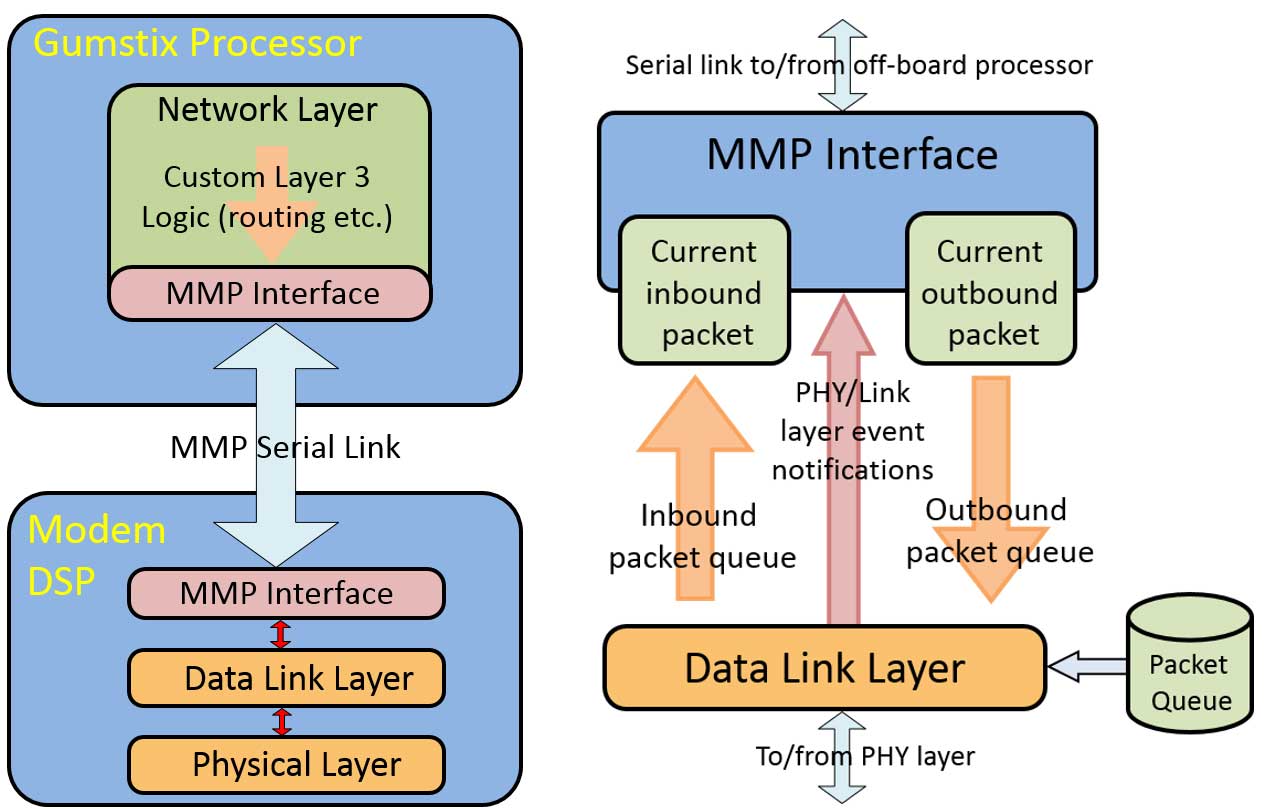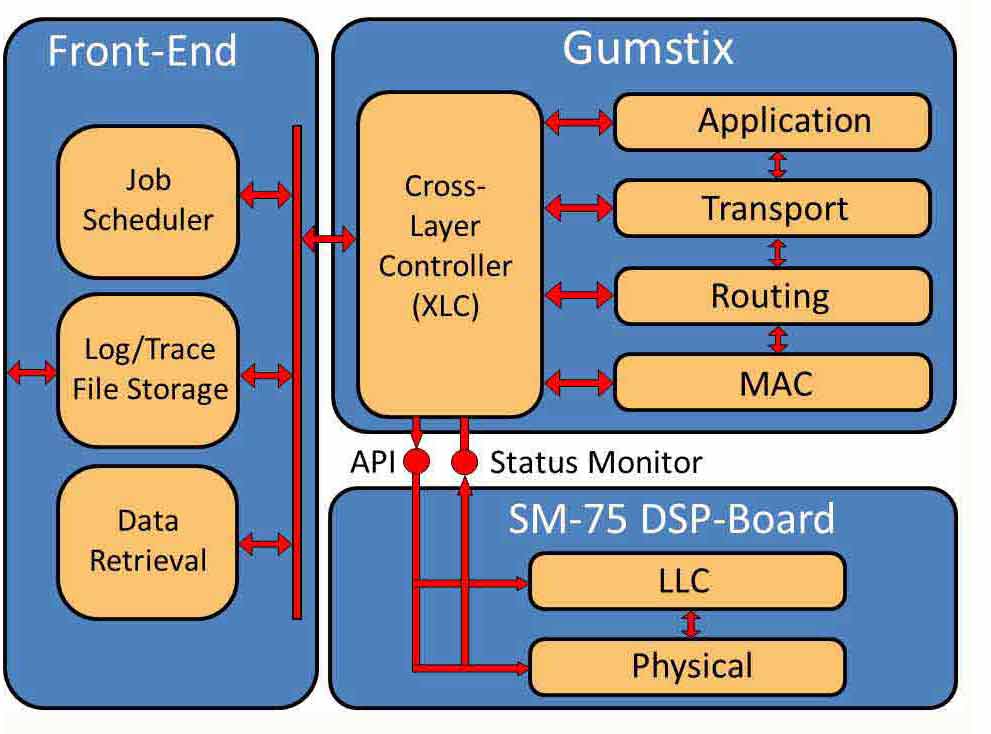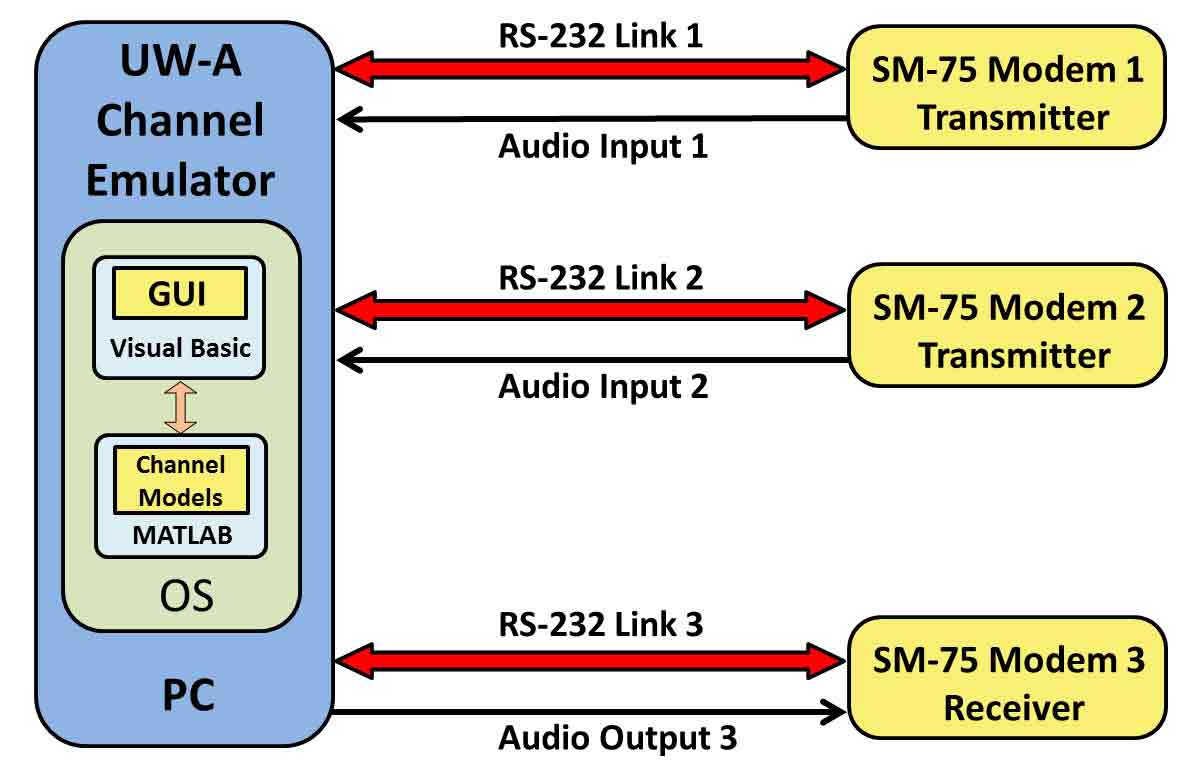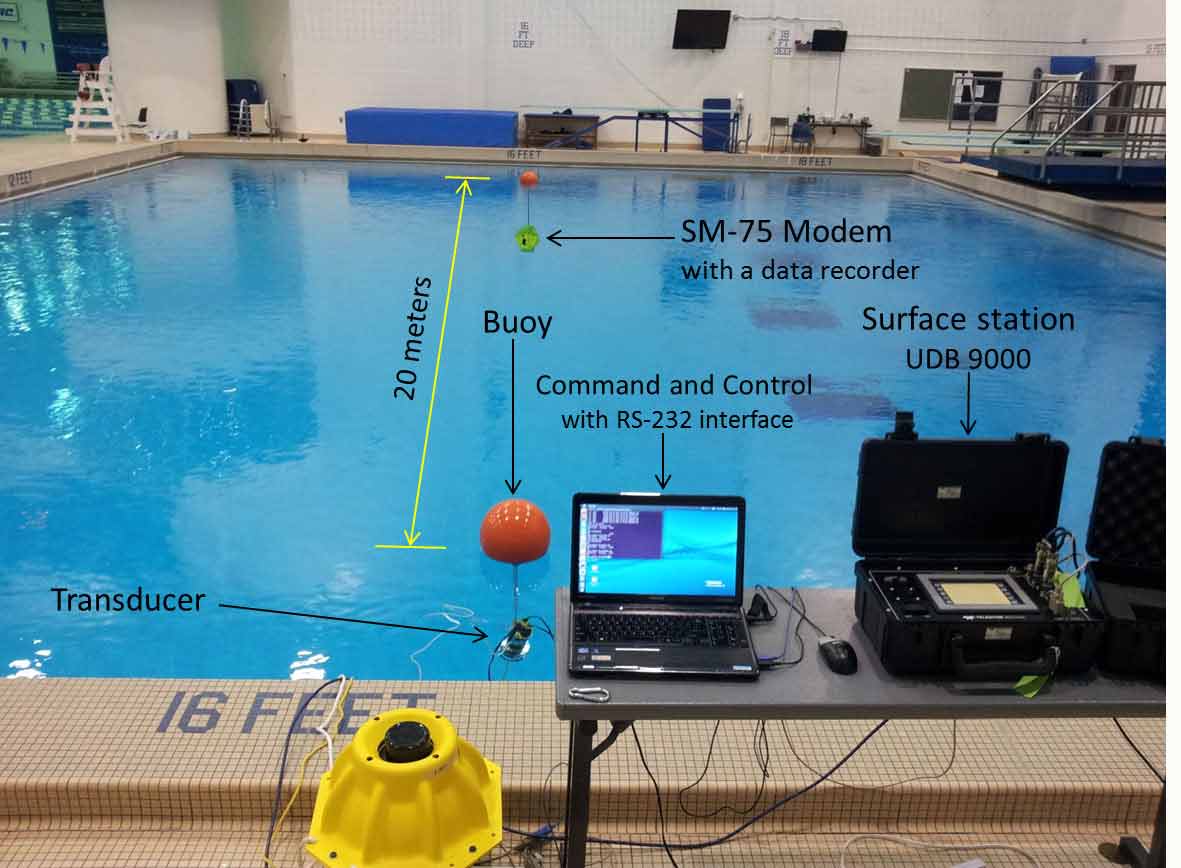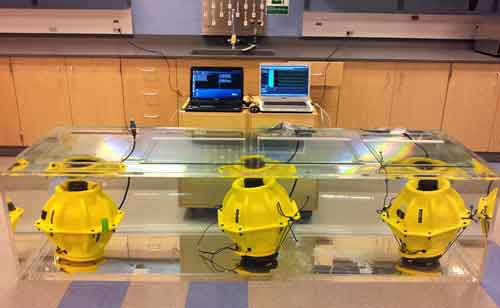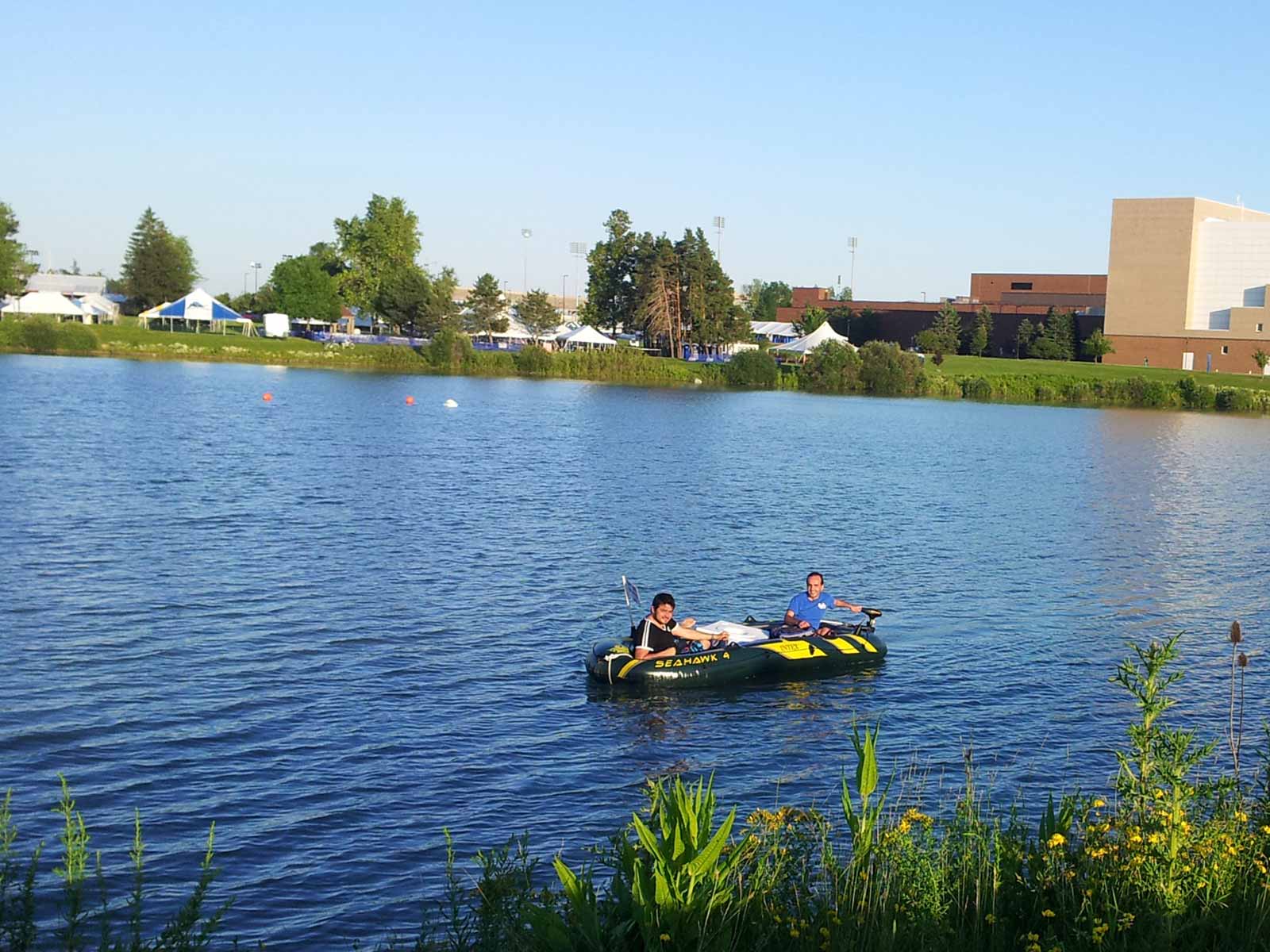Underwater Networking Testbed
|
Testbed Architecture The underwater acoustic networking testbed was designed to bridge the gap between experimentation and theoretical developments in underwater communications and networking, and is the result of a joint venture between the University at Buffalo and Teledyne Benthos. The objective of the project is to provide the research community with a versatile and shared reconfigurable platform to enable experimental evaluation of underwater communications and networking protocols. |
|
External Controller for the SM-75 Acoustic Modem The SM-75 modem is interfaced with an additional external controller on a daughterboard, a Gumstix (a small computer-on-module) residing on the Tobi expansion board. |
|
Developing Networking Protocols through the Modem Management Protocol (MMP) The logic in control of the networking functionalities is implemented in the C language and housed on the Gumstix's processor. The Gumstix interfaces with the modem via the established API and may therefore be programmed by project participants. The modem's DSP will only implement physical layer and logical link control functionalities. The modem will offer an API that abstracts all the main physical and link layer functionalities to the Gumstix. In addition, it will offer access to a predefined set of status monitoring signals. |
|
Controlling the Link Layer: Cross Layer Controller and Communication Architecture A key architectural requirement in the design of communication protocols for underwater networking is to facilitate the use of cross-layer interactions. In underwater networks, the attainable capacity of each wireless link depends on the interference level perceived at the receiver. This, in turn, depends on the interaction of functionalities that are distributively handled by all network devices such as power control, routing, and rate policies. Hence, capacity and delay attainable at each link are location dependent, vary continuously, and may be bursty in nature. |
|
Underwater Acoustic Channel Emulator In underwater acoustic sensor networks (UW-ASNs) it is very difficult to conduct repeatable and realistic experiments through a reconfigurable experimental testbed alone; since the physical layer is strongly dependent on the UW-A channel environment and the exact conditions under which an experiment is conducted. Accordingly, we are developing an UW-A channel emulator that allows conducting laboratory controlled experiments. |
|
Graphical User Interface (GUI) We have developed a GUI to accompany the underwater acoustic channel emulator. The user may use the environment setting to emulate several scenarios. Moreover, the user may select the location of the modems. |
 |
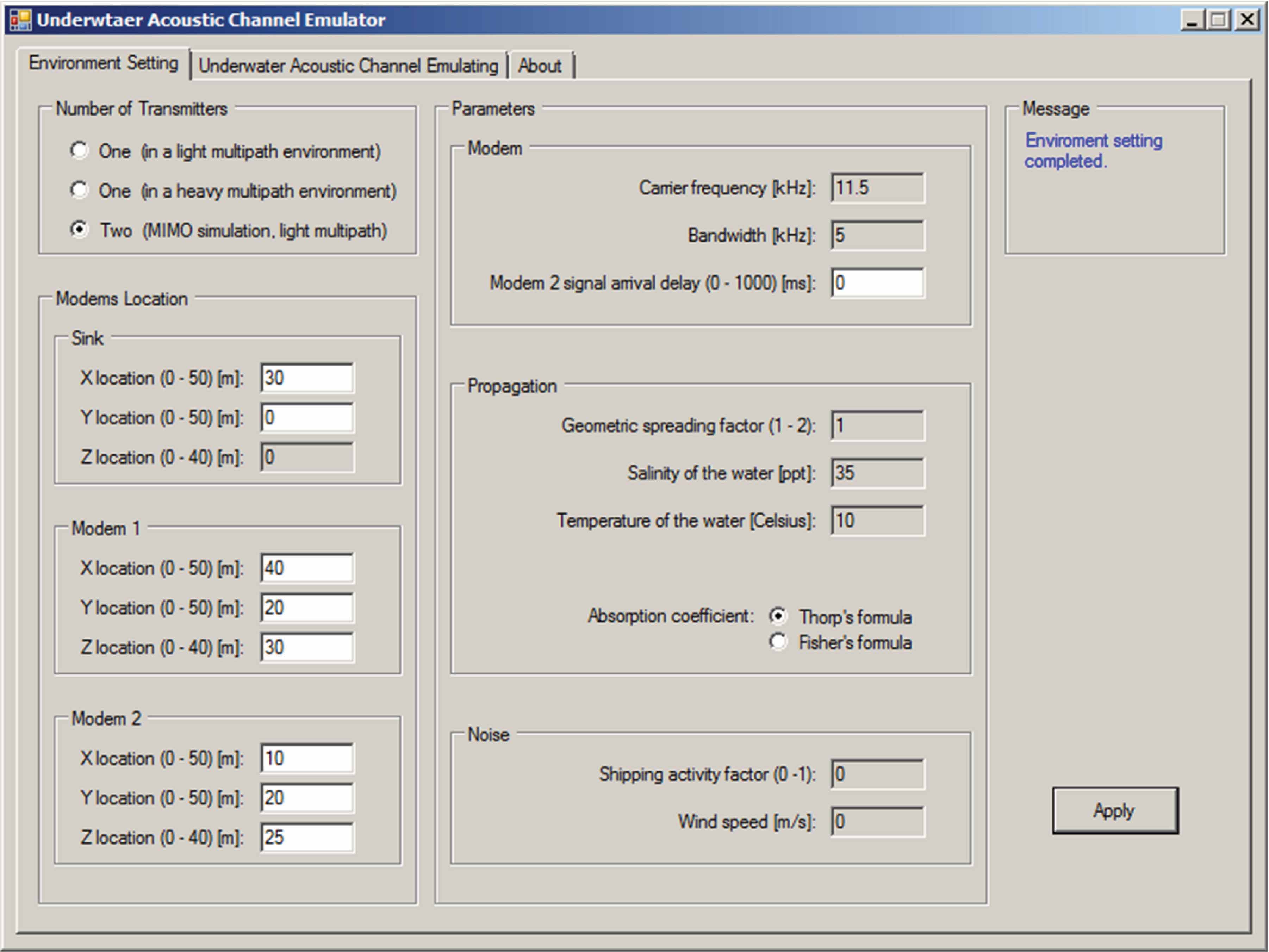 |
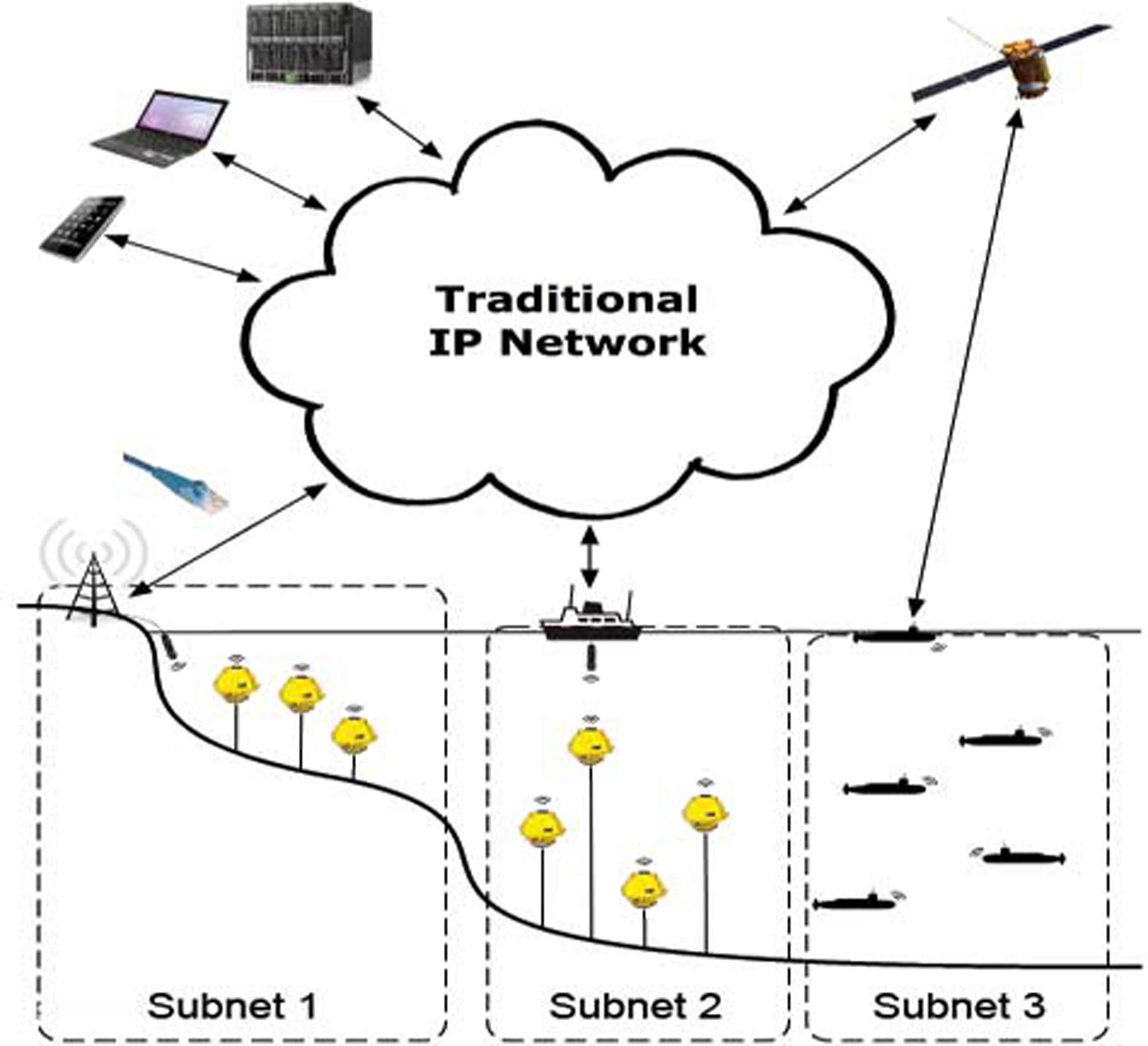 |
The proposal is based on an adaptation layer located between the data link layer and the network layer, such that the original TCP/IP network and transport layers are preserved unaltered to the maximum extent. The adaptation layer performs header compression and data fragmentation to guarantee energy efficiency. Furthermore, the proposed architecture includes mechanisms for auto-configuration based on router proxies that can avoid human-in-the-loop and save energy when broadcast is needed. The proposed architectural framework was implemented as a Linux device driver for a commercial underwater network modem SM-75 by Teledyne Benthos. Testing and simulation results illustrate that the architecture efficiently provides interoperability with TCP/IP. The Internet Underwater architecture was tested extensively at Lake Erie, a few miles south of downtown Buffalo. We were able to demonstrated an IP-level connectivity by successfully sending and receiving a message from the deployed underwater sensor node to the boarder router using acoustic signals, which was relayed through a 3G/4G broadband Internet to a laptop and a smart-phone, connected to the traditional Internet. |
|
Taking the Internet Underwater Semi-permanent underwater Internet testbed deployment near to the small boat harbor in Lake Erie, Buffalo NY. |
 |
 |
In The Media:

|

|

|

|

|
Full Coverage
Related Publications
-
E. Demirors, J. Shi, R. Guida, T. Melodia, "SEANet G2: Toward a High-Data-Rate Software-Defined Underwater Acoustic Networking Platform," in Proc. of ACM Conference on Underwater Networks and Systems (WUWNet), Shanghai, China, October 2016. [pdf] [bibtex]
-
E. Demirors, T. Melodia, "Chirp-Based LPD/LPI Underwater Acoustic Communications with Code-Time-Frequency Multidimensional Spreading," in Proc. of ACM Conference on Underwater Networks and Systems (WUWNet), Shanghai, China, October 2016. Best Student Paper Award [pdf] [bibtex]
-
E. Demirors, G. Sklivanitis, G.E. Santagati, T. Melodia and S. N. Batalama, "Design of A Software-defined Underwater Acoustic Modem with Real-time Physical Layer Adaptation Capabilities," in Proc. of ACM Intl. Conf. on Underwater Networks & Systems (WUWNet), Rome, Italy, November 2014. [pdf] [bibtex]
-
H. Kulhandjian and T. Melodia, "Modeling Underwater Acoustic Channels in Short-range Shallow Water Environments," in Proc. of ACM Intl. Conf. on Underwater Networks & Systems (WUWNet), Rome, Italy, November 2014. [pdf] [bibtex]
-
H. Kulhandjian and T. Melodia, "A Low-cost Distributed Networked Localization and Time-synchronization Framework for Underwater Acoustic Testbeds," in Proc. of IEEE Underwater Communications Conf. and Workshop (UComms), Sestri Levante, Italy, September 2014. [pdf] [bibtex]
-
H. Kulhandjian, T. Melodia, D. Koutsonikolas, "Securing Underwater Acoustic Communications through Analog Network Coding," in Proc. of IEEE Intl. Conf. on Sensing, Communication, and Networking (SECON), Singapore, June 2014. [pdf] [bibtex]
-
Y. Sun, T. Melodia, "The Internet Underwater: An IP-compatible Protocol Stack for Commercial Undersea Modems," in Proc. of ACM Conference on Underwater Networks and Systems (WUWNet), Kaohsiung, Taiwan, November 2013. Best Student Paper Award [pdf] [bibtex]
-
J. Jagannath, A. Saji, H. Kulhandjian, Y. Sun, E. Demirors, T. Melodia, "A Hybrid MAC Protocol with Channel-dependent Optimized Scheduling for Clustered Underwater Acoustic Sensor Networks," in Proc. of ACM Conference on Underwater Networks and Systems (WUWNet), Kaohsiung, Taiwan, November 2013. [pdf] [bibtex]
-
T. Melodia, H. Kulhandjian, L. Kuo, and E. Demirors, "Advances in Underwater Acoustic Networking," in Mobile Ad Hoc Networking: Cutting Edge Directions, Eds. S. Basagni, M. Conti, S. Giordano and I. Stojmenovic, John Wiley and Sons, Inc., Hoboken, NJ, Second Edition, pp. 804-852, 2013. [pdf] [bibtex]
-
H. Kulhandjian, L. Kuo, T. Melodia, D. Pados, D. Green, "Towards Experimental Evaluation of Software-Defined Underwater Networked Systems," in Proc. of IEEE Underwater Communications Conf. and Workshop (UComms), Sestri Levante, Italy, September 2012. [pdf] [bibtex]
-
H. Kulhandjian, L. Kuo, T. Melodia, D. Pados, D. Green, "Towards Experimental Evaluation of Software-Defined Underwater Networked Systems," in Proc. of IEEE Underwater Communications Conf. and Workshop (UComms), Sestri Levante, Italy, September 2012. [pdf] [bibtex]




